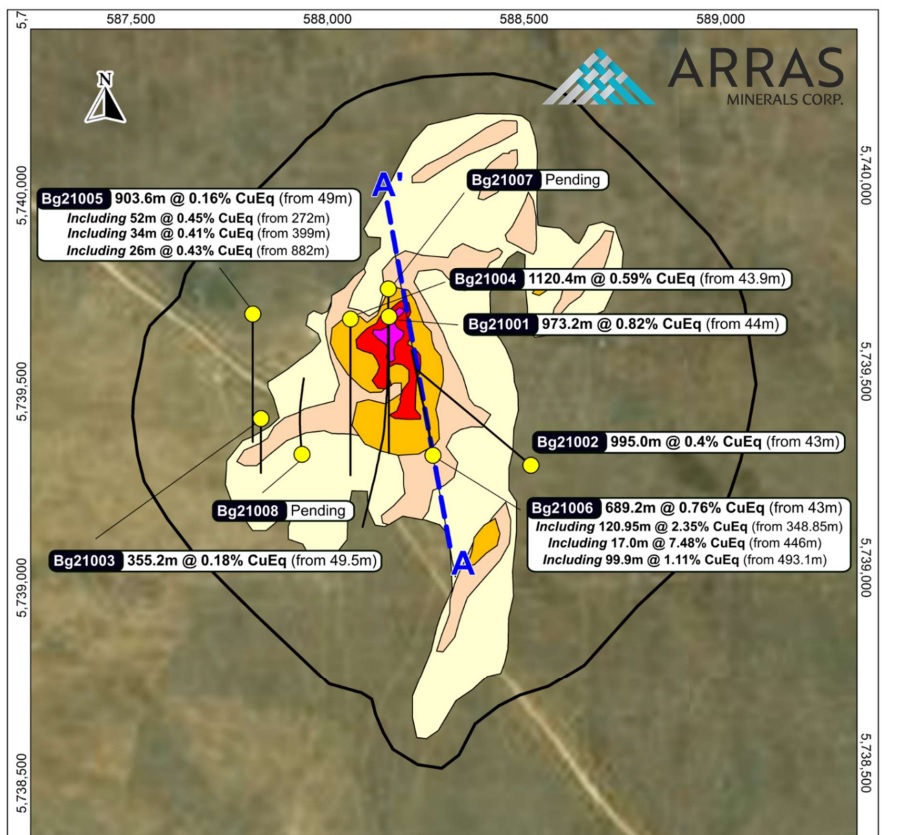
Arras Minerals (ARK.V) has released the assay results from two additional holes completed on the Beskauga flagship project in Kazakhstan. Hole Bg21005 and Bg 21006 both intersected copper mineralization.
Hole Bg21005 was designed to test a magnetic high anomaly immediately west of the Beskauga deposit. As the anomaly was quite large (400 by 500 meters), Arras wanted to drill-test this area and the very first hole encountered almost 904 meters of 0.16% copper-equivalent with about 0.09% copper, 0.16 g/t gold and 1.2 g/g silver in combination with 0.004% molybdenum. The anomaly has now been defined as a ‘strongly potassic-altered monzodiorite intrusion’ and according to the company, the potassic core of the porphyry which is responsible for the mineralization at Beskauga hasn’t been found yet.

At the main deposit, Arras Minerals completed hole Bg21006 which was designed to test the continuity of the mineralization encountered in historical drill holes. The results from this hole were good with Arras hitting almost 700 meters of 0.76% CuEq (consisting of 0.24% copper, 0.6 g/t gold and 1.3 g/t silver). Within this wider interval, the drill bit intersected several shorter but higher grade intervals such as 121 meters of 2.35% copper-equivalent (boosted by a 17 meter interval containing 7.48% CuEq including 1.78% copper and 6.77 g/t gold).
Drilling is ongoing at Beskauga but as these holes are drilled pretty deep the turnaround time from starting a hole to shipping off samples to the lab and getting the assay results back is obviously relatively long.
Disclosure: The author has a long position in Arras Minerals. Please read our disclaimer.
